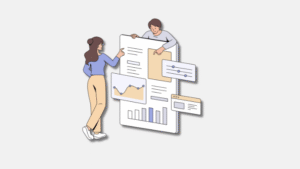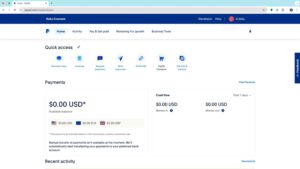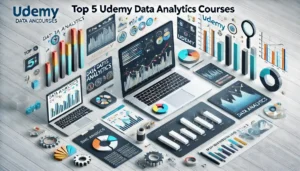Learning data analytics with our comprehensive tutorial! Easy-to-follow, fun, and professional guide for mastering analytics skills step-by-step.
There is no doubt that in today’s technology-driven world, data analytics has emerged as an important tool that aids in decision-making processes. Data analytics enables firms to convert huge amounts of data into useful information. In this article, we show how even the most basic of us can embrace data analytics and master it. 🚀
Let’s Start: What Is Data Analytics?
More formally, data analysis is the execution of statistical and logical operations on data with the aim of discovering useful information about it. Understanding data analysis as a whole implies understanding its components as follows:
- Descriptive Analytics: Explains and describes events and phenomena through the analysis of historical and current information.
- Predictive Analytics: Uses models or algorithms to anticipate future occurrences.
- Prescriptive Analytics: Predicts the consequences of particular circumstances.
Step 1: Understanding Some of the Data Analytics Tools Used
Tools management is one of the important aspects that needs to be paid attention to. We recommend you start with the following essentials:
- Microsoft Excel: Good for basic data manipulation.
- SQL: For data extraction and manipulation.
- Python & R: Programming languages used for data analysis.
- Tableau/Power BI: Tools used for data visualization.
Step 2: Next, Understand the Definition of Data Cleaning Techniques
There is a good chance that most, if not all, raw datasets are messy in their original form. Some data cleaning procedures one can adopt include:
- Dealing with Missing Values: Either reorganize and substitute manufacturing gaps or highlight firms that have nothing.
- Eliminating Duplicates: Remove repeated and/or duplicated entries in a dataset.
- Standardizing Formats: Ensure processes in a dataset are uniform (e.g., abnormal amounts, dates, or currencies).
💡 Pro Tip: Data cleansing and preparation can be made quicker by using tools such as pandas in Python.
Step 3: Focus on Mastering the Usage of Statistical Fundamentals
There is no point in any analytics if there is no usage of analytics concerning its foundation, which focuses on statistics and probabilities. Basic measures of central tendency such as:
- Mean, Median, and Mode: Analyze the core trends in data.
- Standard Deviation & Variance: Comprehend the dispersion of data.
- Correlation vs. Causation: Explore relationships presented by the data.
Step 4: Learn About Different Forms of Data Representations 📊
Visuals convey complex insights in meaningful ways. Concentrate on:
- Bar and Pie Charts: Analyze the distribution of different categories.
- Heatmaps: Examine visuals where one variable is depicted in two dimensions.
- Scatter Graphs: Present relationships in data.
Tools like Tableau, Python’s matplotlib, and Seaborn are invaluable resources.
Step 5: Get Into Machine Learning 🤖
Data analytics often concerns itself with machine learning (ML). Understand the following aspects:
- Supervised Learning: Make predictions with the help of tagged data.
- Unsupervised Learning: Make sense of data that has no tags.
- Regression Models: Forecast continuous variables.
- Classification Models: Sort data into specific categories.
Step 6: Know How to Ethically Deal with Data ⚖️
Ethics are very important. Make the following guidelines your principles:
- Protect Sensitive Data: Sensitive information should not be made accessible.
- Avoid Bias: Biased algorithms should not be encouraged.
- Data Should Be Legitimate: Data-backed decisions must be defendable.
Step 7: Enhance Your Abilities Through Practical Sessions 🌟
Learning is put into perspective through realistic scenarios. Try:
- Sales Data Analysis: Look at historical trends and KPIs.
- Customer Clustering: Useful for marketers targeting specific user groups.
- Website Event Tracking: Enhance online strategies.
Kaggle and GitHub are platforms where datasets can be used to practice.
Step 8: Do Not Stop Learning and Changing 📚
Data analytics is an area that evolves very quickly. Stay updated by:
- Participating in Communities: Join groups like the Data Science subreddit.
- Advanced Online Courses: Enroll in courses for deeper knowledge.
- Industry-Level Webinars: Attend meetups to network and learn.
Frequently Asked Questions on Learning Data Analytics
Q1: What duration does it take to learning data analytics skills?
It depends on your dedication. 3–6 months might suffice to learn the basics, while it could take years to perfect the craft.
Q2: Is it compulsory to have a degree to be a data analyst?
Not really. Many specialists acquire this knowledge through self-study and working on practical projects.
Q3: What are some industries that practice data analytics?
Finance, healthcare, retail, and IT are among the top industries.
Q4: How much can I make as a data analyst?
Junior-level analysts can make an average of $60k annually, with growth in skills and experience leading to higher earnings.
Q5: What language is better for analytics, Python or R?
Python is an all-purpose language with many uses, while R is more focused on statistics. Both are very useful depending on your area of focus.
Conclusion
It is evident that using data analytics can be a thrilling experience for acquiring knowledge. Employment and commitment to practice and tool usage will open new horizons in the digital world. Are you willing to use data in an efficient way and transform it into something informative? Let us get started on the journey! 🎯
Related Articles:



